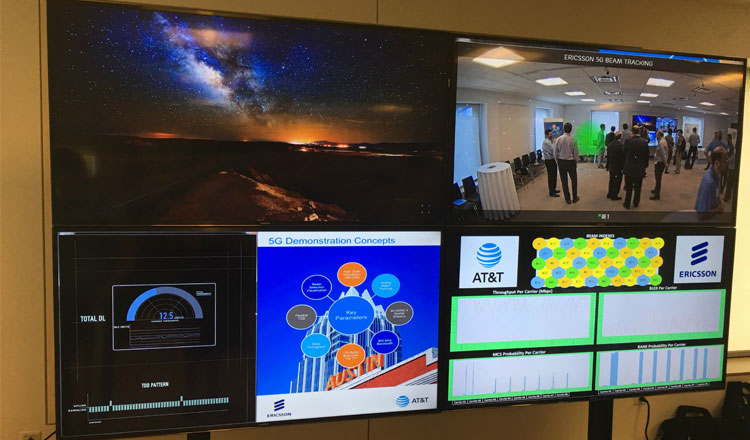
5G gets a lot of hype, and rightfully so. The technology will help us connect more devices faster, enable lower latency, increase battery life and handle more data – like surging video growth on mobile networks.
We’ve noted previously that we’ve seen data grow 150,000% on our mobile network between 2007-2015 with video as a key driver. More than 60% of the data traffic on our total network was video in 2015. Video is the 800 pound gorilla of demand that will influence the timing and footprint of 5G.
So, what’s different about 5G than previous “G’s”?
First, let’s think about your future video experiences courtesy of 5G. We expect 5G to deliver speeds 10-100 times faster than today’s average 4G LTE connections. Customers will see speeds measured in gigabits per second, not megabits. For reference, at one gigabit per second, you can download a TV show in less than 3 seconds. Customers will also see much lower latency with 5G. Latency, for example, is how long it takes after you press play on a video app for the video to start streaming on your device. We expect 5G latency in the range of 1 to 5 milliseconds.
You can see multiple use cases on the horizon to tap this next-gen network. Many of these 5G use cases – virtual reality, remote telemedicine, autonomous cars, etc. – are not moonshots. But to work effectively for the mobile customer or a business, you need multi-gigabit bandwidth speeds and low latency.
Take autonomous cars. Using live maps for real-time navigation is crucial to this vision. Ultra-low latency will be an essential part of making these live maps effective – a key trait of 5G.
We’re paving the path to 5G today. Just this week we held our first public demo of 5G technology with Ericsson at the Texas Wireless Summit.
Here, we showed the possibilities of millimeter wave radio access technology for the networks of the future. Attendees saw multi-gigabit per second (gbps) bandwidth reaching speeds near 14 gbps, similar to what we’ve seen in our 5G lab trials.
They also got a look at how 5G plays a role in 4K HD video. And they learned how Multiple Input Multiple Output (MIMO) and dynamic beam tracking and acquisition work.
At our labs, we’re testing equipment to better understand how different features work, in both mobile and fixed conditions. We’re currently testing equipment with vendors like Ericsson, Intel, Nokia, and Samsung Networks across a range of frequencies.
In Austin, we’re working with industry test equipment vendors to co-design and build a new piece of “channel sounding” equipment. This sophisticated device will measure things like attenuation, delay, reflections and the specific angles and timing of the various beams and reflections.
These measurements will help show us how millimeter wave signals travel in a variety of conditions and places. We’ll examine things like foliage, reflections from buildings and surfaces, moving obstacles and reflectors like cars and trucks.
In Middletown, New Jersey, we’ve designed specialized research equipment and constructed an outdoor test range. We’ll soon take measurements of various types of signal paths under different conditions here.
Our goal? Understand the differences at various heights when leaves are on or off the trees. How dry leaves may have a different impact on signals than wet leaves. Or even how ice and snow on tree branches may impact signals.
This will teach us how millimeter waves operate in various conditions season to season.
And we’re not just limiting ourselves to work on radio features. We also have active research programs looking at the new software architectures. Across our 5G and RAN architecture lab and field testing work, we’ve worked with about a dozen companies in various proof-of-concept tests and trials for over 2 years.
In our proof-of-concept tests, we exposed systems to the challenge of real-world conditions. We tested their performance under the stress of traffic loads, delayed impairments and transported impairments. We’re even inventing brand new technologies, like Project AirGig, to help extend the reach of 5G networks.
And while there’s a lot of focus on 5G, don’t discount 4G LTE. It will be around for a long time.
And we see tremendous potential for it. One example being its capability of supporting 1 gigabit speeds in the near future. We now cover the vast majority of our customers in our LTE coverage area with LTE-Advanced.
We’re deploying 3-way carrier aggregation today. And next year, we plan to start rolling out 4-way carrier aggregation. This all means faster speeds and an improved customer experience.
From LTE-A to 5G, we’re continuing more and more experiments in our trials. We’ll keep you updated on our progress as we continue down the road to 5G.

Tom Keathley – Senior Vice President, Wireless Network Architecture & Design
PR Archives: Latest, By Company, By Date